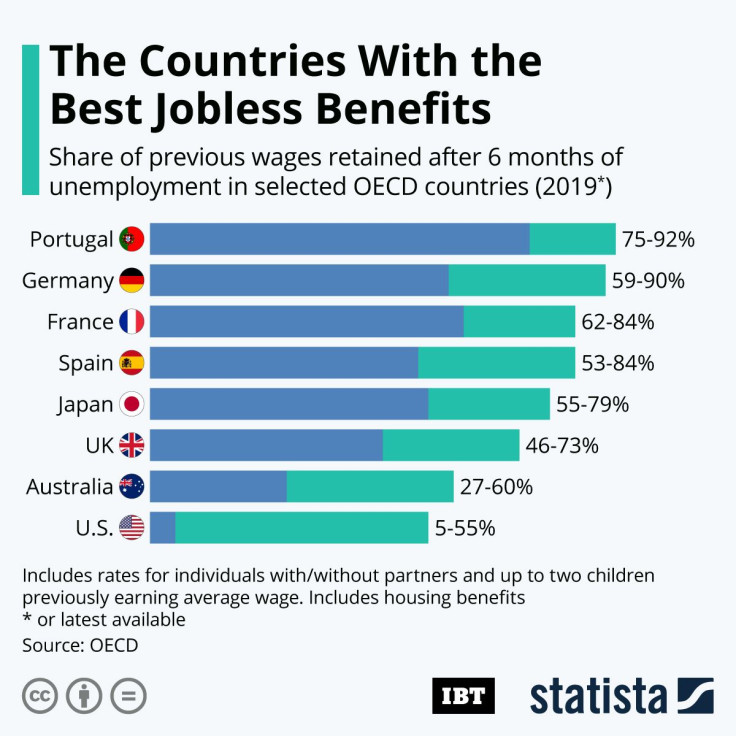Infographic: The Countries With The Best Jobless Benefits

The Australian government’s doubling of the so-called Jobseeker payment for the unemployed as a response to the coronavirus outbreak has triggered a discussion about the general quality of the county’s safety net. Temporarily, people on the Jobseeker allowance can receive a maximum base rate of around AUS$1,116 instead of AUS$566 a fortnight, not including rent assistance and family payments.
A look at OECD data shows that after six months of unemployment the share of previous wages that Australians are able to retain between Jobseeker allowance, housing benefits and parenting payments (if applicable) is far below that of many other developed nations. Benefits varied between 27 percent for singles with no kids and 60 percent for those with two children and a partner on minimum wage. The poor performance of Australia’s unemployment benefits partly stems from the fact that instead of paying out benefits modeled on previous wages (and jobless benefits saved up while working), the country pays out mostly flat rates for benefits, housing and parenting payments.
In fact, the unaffordability of the Australian market has led to those receiving Jobseeker (formerly Newstart) or Youth Allowance being virtually unable to afford rental properties. Australia’s benefits were still slightly above those paid in the United States, where a single parent with no kids can receive as little as 5% of his or her original average wage in assistance within six months of becoming unemployed.





















